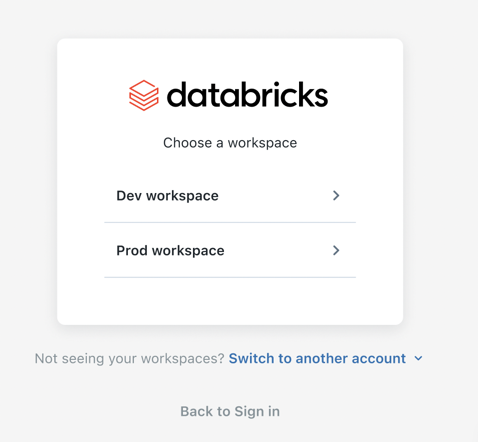October 2022
These features and Databricks platform improvements were released in October 2022.
Note
Releases are staged. Your Databricks account might not be updated until a week or more after the initial release date.
GA: Repos support for non-notebook files
October 31, 2022
Databricks Repos support for non-notebook files is GA. See What are workspace files?.
Deploy models for streaming inference with Delta Live Tables notebooks
October 27, 2022
You can now automatically generate a notebook to use the model for streaming inference via Delta Live Tables. For details, see Configure streaming inference using Delta Live Tables.
Connect to Fivetran from the add data UI
October 27 - November 3, 2022
You can now connect to Fivetran from the add data UI by following the same steps you follow to connect to Fivetran from the Partner Connect portal.
Databricks SQL Driver for Node.js is Generally Available
October 27, 2022
Databricks now provides full support for the Databricks SQL Driver for Node.js. The new version number is 1.0.0.
Changes include:
DBSQLClient.openSessionnow uses the latest protocol version by default.The direct results feature is now available for all
IOperationmethods that support it. It is on by default.Direct results are now enabled by default. If
maxRowsis omitted, it defaults to 100,000. To disable direct results, setmaxRowstonull.The
runAsyncoption is now available for all operations that support it.Logging functionality is added for client-side logging, and a new optional
loggerparam is added to theDBSQLClientconstructor.
See the full changelog.
Partner Connect supports connecting to erwin Data Modeler by Quest
October 25-28, 2022
You can now easily create a connection between erwin Data Modeler by Quest and your Databricks workspace using Partner Connect. For more information, see Connect to erwin Data Modeler using Partner Connect.
Optimize performance and control costs by using different pools for the driver node and worker nodes
October 21, 2022
You can now optimize your cluster by attaching it to a different pool for the driver node and worker nodes. For example, you can use a compute-optimized pool for the driver node and a storage-optimized pool for worker nodes. This also helps you control costs by assigning different tags to each instance pool. If you choose, you can use the same pool for drivers and worker nodes.
For more information, see Pool configuration reference.
Databricks Runtime 11.3 LTS and 11.3 LTS ML are GA
October 19, 2022
Databricks Runtime 11.3 LTS and 11.3 LTS ML are now generally available.
Note
LTS means this version is under long-term support. See Databricks Runtime LTS version lifecycle.
See Databricks Runtime 11.3 LTS and Databricks Runtime 11.3 LTS for Machine Learning.
Format Python code in notebooks (Public Preview)
Oct 17-21, 2022
You can now format Python cells in a notebook, making it easier to read and maintain code and enforce coding standards across notebooks. For details, see Format code cells.
DBFS Rest API is available for all customers
October 13, 2022
You can now interact with DBFS using the DBFS Rest API. See DBFS API.
Add data UI provides a central UI for loading data to Databricks
October 11, 2022
The add data UI provides access to common data sources configurations and file upload UIs for all Databricks personas. See Upload files to Databricks.
Create or modify table from file upload page unifies experience for small file upload to Delta Lake
October 11, 2022
Databricks now supports uploading small files to Delta Lake using a UI from all personas. See Create or modify a table using file upload.
Partner Connect Public Preview
October 11, 2022
Partner Connect is now in Public Preview. For more information, see What is Databricks Partner Connect?.
Cluster UI preview and access mode replaces security mode
October 11, 2022
The new Create Cluster UI is in Preview. See Clusters UI changes and cluster access modes.
Partner Connect supports connecting to Hevo Data
October 11, 2022
You can now easily create a connection between Hevo Data and your Databricks workspace using Partner Connect. For more information, see Connect to Hevo Data using Partner Connect.
Account users can access the account console
October 11-31, 2022
Account users can access the Databricks account console to view a list of their workspaces. Account users can only view workspaces that they have been granted access to. See Manage account console settings.

Users from workspaces are synced automatically to your account as account users. See How do admins assign users to the account?.
Enable admin protection for Standard clusters (or High Concurrency clusters without table ACLs)
October 7, 2022
Account admins can prevent internal credentials from being automatically generated for Databricks workspace admins on Standard clusters (or High Concurrency clusters without table ACLs).
SQL persona integrated with new search experience
October 6, 2022
Global search is now available in the SQL persona. You can now search for queries, dashboards, and alerts with global search in any persona by name using the new search experience. You can also search for content within a query and see a preview of matching content.
Service principals provide API-only access to Databricks resources (Public Preview)
October 3-6, 2022
Databricks administrators can use the Service Principals API to add API-only service principals to Databricks and grant them access to resources, just like normal users. Administrators can create personal access tokens on behalf of service principals. For details, see Manage service principals.
Databricks Runtime 11.3 (Beta)
October 3, 2022
Databricks Runtime 11.3 is now available as a Beta release.
See Databricks Runtime 11.3 LTS and Databricks Runtime 11.3 LTS for Machine Learning.
The account console is available in multiple languages
October 1, 2022
The account console is now available in the following languages:
English
Deutsch
Español
Français
Italiano
日本語
한국어
Português (Brasil)
Português (Portugal)
To change the account console language, click your username in the console’s top navigation bar, select Settings, and go to the Language settings tab.